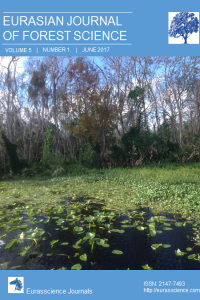Abstract
References
- Akala V.A., Lal, R. (2001). Soil organic carbon pools and sequestration rates in reclaimed mine soils in Ohio. Journal of environmental quality 30, 2098-2104.
- Asensio, V., Vega, F.A., Andrade, L., Cavelo, E.F. (2011). Tree vegetation to improve physicochemical properties in bare mine soils. Fresenius Environmental Bulletin 20, 3295-3303.
- Barrutia, O., Artetxe, U., Hernandez, A., Olano, J.M., Garcia-Plazaola, J.I., Garbisu, C., Becerril, J.M. (2011). Native plant communities in an abandoned Pb-Zn mining area of northern Spain: implications for phytoremediation and germplasm preservation. International Journal of Phytoremediation 13, 256-270.
Impact of mining on herbaceous ground cover and wild fauna in Birsha- Damoh forest range a buffer zone of Malanjkhand Copper mines of India
Abstract
Mining is known to demolish the natural ecosystem adjacent to mining sites all over world and it generates massive volumes of wastes which are dumped adjacent to mining areas resulting in damage to the natural ecosystem, reducing herbaceous ground cover and wildlife. Hinustan Copper Mines (HCM) is the Asia’s largest open cast copper mines and produces 70 % copper for the Indian market.
A study was carried out at buffer zone of HCM in 31 forest sites of Birsha-Damoh forest range area of Balaghat district of Madhya Pradesh in India. The herbaceous ground cover (HGC) was estimated by line transect method. Results indicated that the total average herbaceous ground cover ranged from 11.2 - 77.44%, indicating least wildlife movement at site 14 and maximum at site 29. The dominant herbaceous plants were Cynodon dactylon followed by Lantana camara, Thysanolaena maxima covering across most of the sites. The rest of the herbaceous species were Vallaris heyne, Achyranthes aspera, Eragrostis tenella, Waltheria indica and Ocimum Gratissimum, found as casual constituents of the community. The maximum number (7) of wild animals presence in day was observed at Cynodon dactylon and Thysanolena maxima dominated sites and minimum number (1) was observed at Lantana camera dominated forest sites.
References
- Akala V.A., Lal, R. (2001). Soil organic carbon pools and sequestration rates in reclaimed mine soils in Ohio. Journal of environmental quality 30, 2098-2104.
- Asensio, V., Vega, F.A., Andrade, L., Cavelo, E.F. (2011). Tree vegetation to improve physicochemical properties in bare mine soils. Fresenius Environmental Bulletin 20, 3295-3303.
- Barrutia, O., Artetxe, U., Hernandez, A., Olano, J.M., Garcia-Plazaola, J.I., Garbisu, C., Becerril, J.M. (2011). Native plant communities in an abandoned Pb-Zn mining area of northern Spain: implications for phytoremediation and germplasm preservation. International Journal of Phytoremediation 13, 256-270.
Details
| Primary Language | English |
|---|---|
| Journal Section | Articles |
| Authors | |
| Publication Date | July 2, 2017 |
| Submission Date | January 13, 2017 |
| Published in Issue | Year 2017 Volume: 5 Issue: 1 |
Cited By
Air quality modelling for prediction of dust concentrations in iron ore mines of Saranda region, Jharkhand, India
Atmospheric Pollution Research
S.K. Chaulya
https://doi.org/10.1016/j.apr.2018.11.005
LAND USE/LAND COVER CHANGE DETECTION ANALYSIS USING REMOTE SENSING AND GIS OF DHANBAD DISTRICT, INDIA
Eurasian Journal of Forest Science
Ranjeet Kumar Singh
https://doi.org/10.31195/ejejfs.428381
Ex-situ conservation of medicinal Plants and its therapeutic in mine impacted lands in dry tropical forests of Jharkhand, India
Eurasian Journal of Forest Science
Raj Sekhar Singh
https://doi.org/10.31195/ejejfs.351282
E-mail: Hbarist@gmail.com
ISSN: 2147-7493
Eurasian Journal of Forest Science © 2013 is licensed under CC BY 4.0


